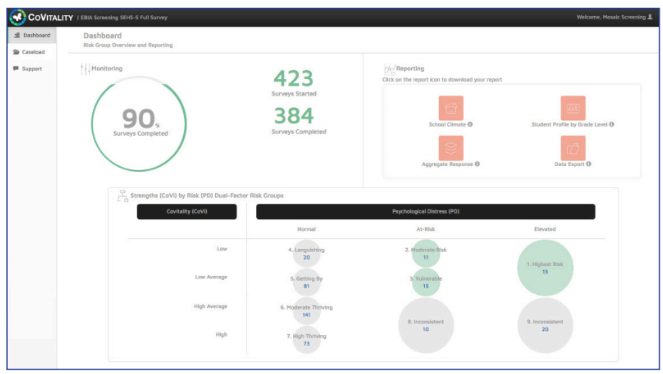Social Emotional Health Survey-Primary (SEHS-P)


The SEHS-P has 20 items that measure gratitude, optimism, zest, persistence, and prosocial behavior (Project CoVitality). This survey is appropriate for students in Grades 5-8 and possibly younger. Students respond to each item on a 4-point Likert scale: for example, “I am lucky to go to my school” (Furlong). It is reliable and valid. A version is available specifically for secondary students. This survey can be administered through Mosaic Network Inc.’s CoVitality Screener. Though it requires a substantial purchase, this app allows students to take the survey online and receive results in real time. The screener compiles their responses into an intuitive report that facilitating insights on individual and group wellbeing (see image to the right). All data are secure and comply with HIPAA and FERPA. It also includes additional scales, making it optimal for universal screenings for school well being. To review the SEHS-P, click here.

|
Pros for Schools |
Cons for Schools |
|
20 items |
The CoVitality Screener typically costs $500 (set up with custom configuration and training fee) and $1.25 per student |
Images in this sections are used with permission by Mosaic Network Inc.
Suggestions for Further Research
Furlong, M. (n.d.). Project CoVitality: Social Emotional Health Survey-Primary. Retrieved December 19, 2018, from https://edtechbooks.org/-LfG
Furlong, M. (2016). Project CoVitality. Retrieved from https://edtechbooks.org/-Pdt.
Mosaic Network Inc. (n.d.). Covitality. Retrieved from http://www.covitalityapp.com/.
Project CoVitality. (n.d.). Measures. Retrieved October 29, 2019, from https://edtechbooks.org/-AxeQ.
SEHS System. (n.d.). Social-Emotional Health Survey system. http://www.sehss.com/.
For a more complete list of relevant academic articles, click here.